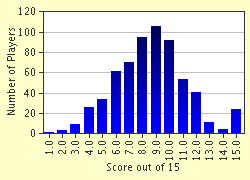Quiz Answer Key and Fun Facts
1. What does the Hebrew word "masada" mean?
2. Who built the Masada palace and fortified the citadel?
3. Which sea does Masada overlook?
4. How many palaces were built in Masada?
5. What was the first name of the Jewish leader that captured Masada from the Romans?
6. The Jewish defenders of Masada belonged to which stream of Judaism?
7. Which Roman legion, led by successful commander Flavius Silva, was assigned to take Masada?
8. Upon reaching Masada, Flavius Silva deemed that a siege would be necessary rather than a frontal assault. How many camps did the Romans build around Masada to lay siege to the citadel?
9. Masada was built on a high outcrop of rock with cliffs almost all around. How did Flavius Silva attempt to reach the gates of Masada?
10. The outer wall fell to the Roman battering ram, though it took all day. Upon nightfall, the Romans ceased their assault to regroup for the following day. Nevertheless, the Jewish defenders did not give up and quickly created a second wall. How did the Romans breach the newly built inner wall?
11. Masada besieged held out longer than Jerusalem besieged?
12. What was the terrible end that Ben Ya'ir proposed to the defenders?
13. The tragedy of Masada befell all the defenders of the citadel?
14. Masada fell, to the dismay of the pockets of resistance still existing in the Holy Land. What commemoration was made in Rome of the Roman victory over Masada?
15. What is the oath that all IDF Armour Corps take atop the ruins of Masada?
Source: Author
LeoDaVinci
This quiz was reviewed by FunTrivia editor
bloomsby before going online.
Any errors found in FunTrivia content are routinely corrected through our feedback system.

